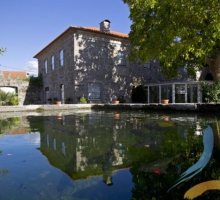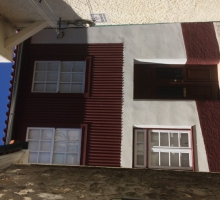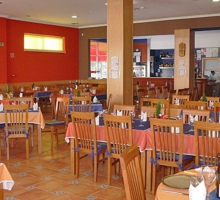INTERPRETATION CENTRE OF LAMEGO
Classified as National Monument, the Castle of Lamego rises from the highest point of the walled space, where the city had its origin. It has been documented since the 10th century, in a period in which the Douro Valley was strongly disputed by Christian and Muslim forces until the definite “Reconquest” of the city by Fernando Magno’s armies, in 1057. Continuously transformed over time, the present structure of the Keep and the walled enclosure of the
Praça de Armas (Parade Square) reveal a Gothic and Romanesque solution of the 12th and 13th centuries, although the remains of previous phases are still preserved. The archaeological works reveal also the presence of a Christian graveyard on site from the “Reconquest” period, certainly related with the disappearance of S. Salvador’s temple, located nearby.
The recent restructuring project has provided the monument with visiting conditions, being possible to cover the entire top of the Praça de Armas (Parade Square) walled enclosure and enjoy the wide open views over the Historical Centre of the City. The three floors of the Keep host one of the Interpretation Centre division, dedicated to the history of the city and to the urban space evolution. Here the visitor can explore a Timeline of Lamego history, watch an Video Mapping over the topographic model of the urban space or interact in a dynamic way with the medieval warfare replicas – catapult and crossbow – in the game “Castle Assault”.
The Cisterna is located in Bairro do Castelo, inside the walled stronghold that protected the city, it is rightfully considered one of the most outstanding urban cisterns of the medieval period (13th-14th cent.).
It is a wide reservoir of vaulted structure, built in signed granitic ashlars. On the paved upper terrace, we can still see the openings that allowed the urban population to obtain water for their daily activities for successive generations.
The recent rehabilitation of the monument created conditions to visit the Cistern interior, now transformed in an exhibition space. In the context of the water element, the visitor is invited to dive into an anonymous and quotidian past of the ancient city, evoked from sounds, images and memories projected on the construction stones.
Location: Lamego
Classified as National Monument, the Castle of Lamego rises from the highest point of the walled space, where the city had its origin. It has been documented since the 10th century, in a period in which the Douro Valley was strongly disputed by Christian and Muslim forces until the definite “Reconquest” of the city by Fernando Magno’s armies, in 1057. Continuously transformed over time, the present structure of the Keep and the walled enclosure of the
Praça de Armas (Parade Square) reveal a Gothic and Romanesque solution of the 12th and 13th centuries, although the remains of previous phases are still preserved. The archaeological works reveal also the presence of a Christian graveyard on site from the “Reconquest” period, certainly related with the disappearance of S. Salvador’s temple, located nearby.
The recent restructuring project has provided the monument with visiting conditions, being possible to cover the entire top of the Praça de Armas (Parade Square) walled enclosure and enjoy the wide open views over the Historical Centre of the City. The three floors of the Keep host one of the Interpretation Centre division, dedicated to the history of the city and to the urban space evolution. Here the visitor can explore a Timeline of Lamego history, watch an Video Mapping over the topographic model of the urban space or interact in a dynamic way with the medieval warfare replicas – catapult and crossbow – in the game “Castle Assault”.
The Cisterna is located in Bairro do Castelo, inside the walled stronghold that protected the city, it is rightfully considered one of the most outstanding urban cisterns of the medieval period (13th-14th cent.).
It is a wide reservoir of vaulted structure, built in signed granitic ashlars. On the paved upper terrace, we can still see the openings that allowed the urban population to obtain water for their daily activities for successive generations.
The recent rehabilitation of the monument created conditions to visit the Cistern interior, now transformed in an exhibition space. In the context of the water element, the visitor is invited to dive into an anonymous and quotidian past of the ancient city, evoked from sounds, images and memories projected on the construction stones.
Location: Lamego





